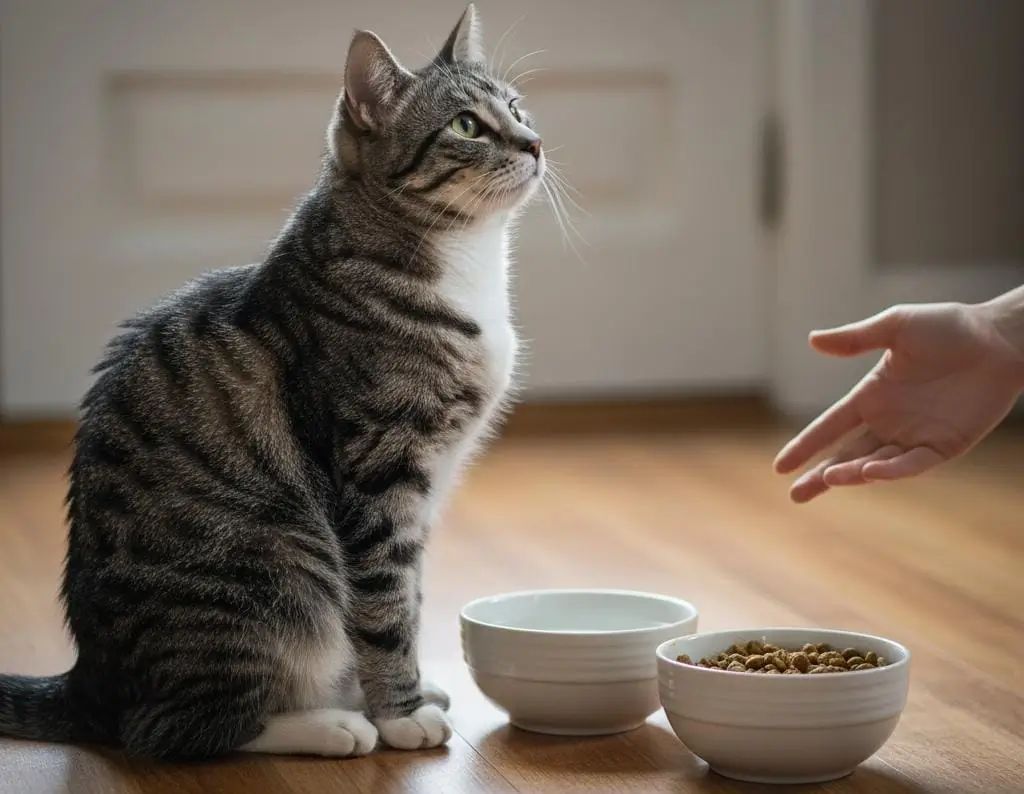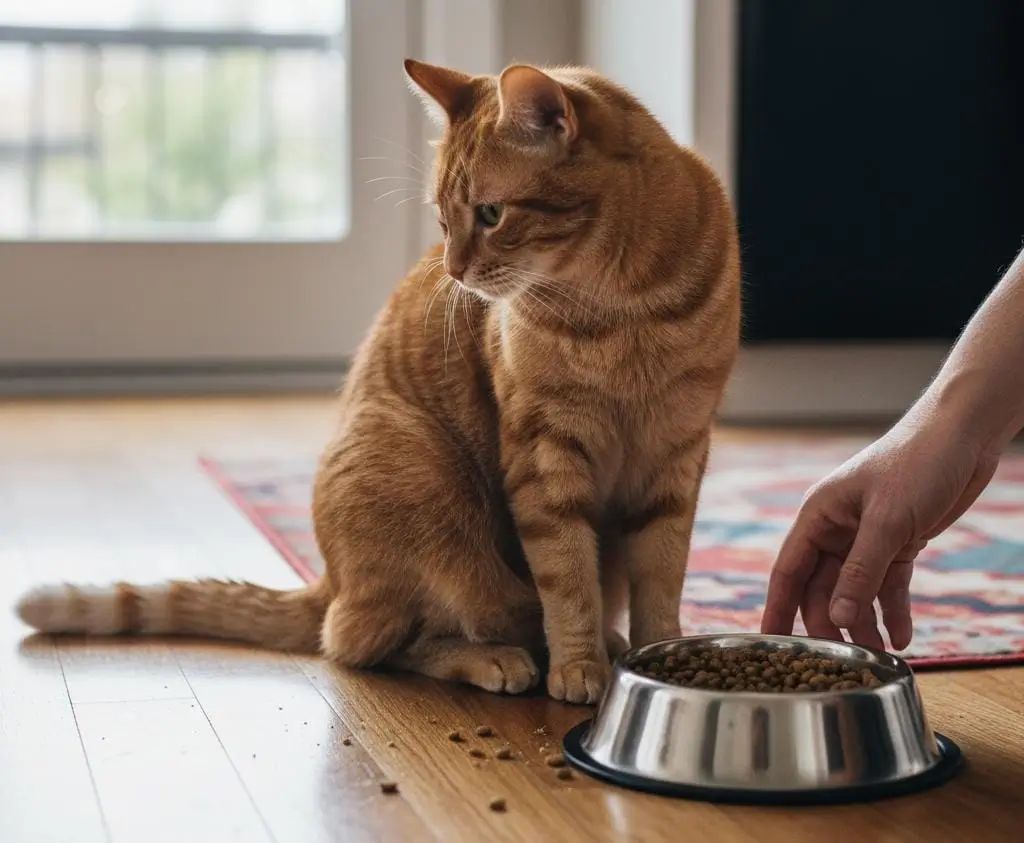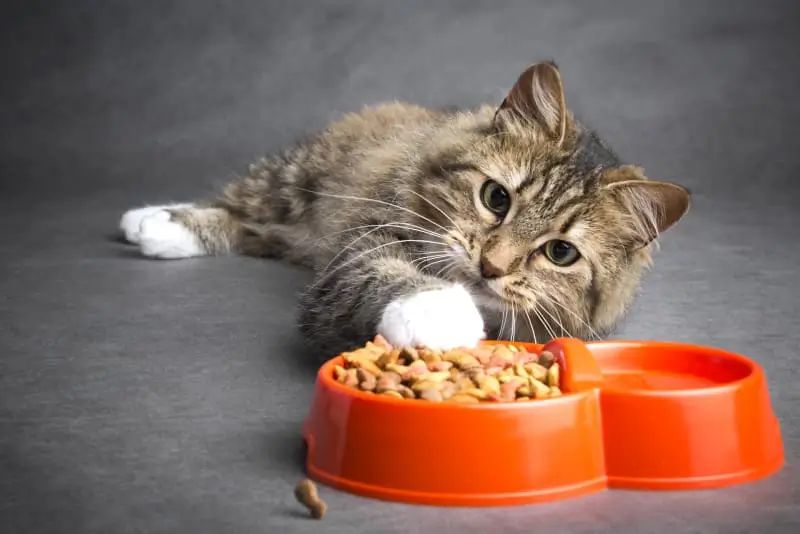If you’re searching “why is my cat not eating or drinking” or “why is my kitten not eating or drinking,” you’re likely worried about your pet’s health. A cat not eating (feline anorexia) or a kitten refusing food and water can signal serious issues, from stress to life-threatening conditions like hepatic lipidosis, a liver disease triggered by prolonged fasting. Kittens are especially vulnerable, as their small bodies can’t sustain long periods without nutrition or hydration, risking hypoglycemia or fading kitten syndrome.
Understanding Feline Anorexia and Dehydration in Cats and Kittens

Feline anorexia refers to a complete or partial (hyporexia) loss of appetite, while dehydration occurs when a cat or kitten’s water intake falls below their needs. Cats, as obligate carnivores, require consistent protein intake, and even 24-48 hours without food can lead to rapid weight loss and organ stress. For kittens, not eating or drinking for just 12-24 hours can cause severe dehydration or dangerously low blood sugar (hypoglycemia), potentially leading to fading kitten syndrome, where young kittens weaken and fail to thrive. Recognizing early signs—such as lethargy, weight loss, or changes in behavior—is critical for timely intervention.
Common Medical Reasons Why Your Cat or Kitten Is Not Eating or Drinking
Medical issues are often the root cause when a cat or kitten stops eating or drinking. These conditions can cause pain, nausea, or systemic dysfunction, suppressing appetite and thirst. Below, we delve into the most common medical causes with detailed explanations.
Dental Problems and Oral Pain
Dental issues are a leading cause of a cat not eating. Periodontal disease, gingivitis, tooth abscesses, fractured teeth, or oral tumors make chewing painful, causing cats to avoid food. In kittens, teething (typically between 3–6 months) inflames gums, making hard kibble unappealing, which can extend to refusing water if mouth pain is severe. Symptoms include drooling, bad breath, pawing at the mouth, or dropping food. Cats may show interest in food but walk away after attempting to eat. Regular dental checkups and cleanings can prevent these issues, but untreated dental pain can lead to weight loss and malnutrition.
Upper Respiratory Infections
Upper respiratory infections (URIs), often caused by viruses like feline herpesvirus or calicivirus, are common in cats, especially shelter kittens. These infections cause nasal congestion, sore throat, fever, and loss of smell, making food and water unappealing. A cat not eating due to a URI may also avoid drinking because of discomfort swallowing or reduced thirst drive. Symptoms include sneezing, watery eyes, nasal discharge, and lethargy. Kittens are particularly susceptible, and URIs can escalate to pneumonia if untreated, making early veterinary intervention essential.
Gastrointestinal and Digestive Issues
Digestive problems are a frequent cause of cat not eating or drinking. Conditions like inflammatory bowel disease (IBD), pancreatitis, food allergies, or intestinal parasites (e.g., roundworms, Giardia) trigger nausea, vomiting, or diarrhea, reducing appetite. In kittens, parasites are especially common, particularly in those from shelters or outdoor environments. Eating spoiled food, garbage, or non-food items (like strings or toys) can cause intestinal blockages, a medical emergency requiring immediate surgery. Symptoms include vomiting, diarrhea, constipation, or abdominal pain. Chronic issues like cancer or acute problems like gastroenteritis also suppress appetite and thirst.
Kidney Disease, Liver Issues, and Organ Failure
Chronic kidney disease (CKD), liver dysfunction, or organ failure are common in senior cats but can occur in kittens with congenital defects. CKD initially increases thirst and urination, but as it progresses, nausea and weakness lead to a cat not eating or drinking. Liver issues, including hepatic lipidosis, arise when a cat stops eating, causing fat to accumulate in the liver. Symptoms include yellowing of the eyes (jaundice), weight loss, and lethargy. Kittens with congenital liver or kidney issues may show failure to thrive, making early diagnosis critical.
Endocrine Disorders Like Diabetes and Hyperthyroidism
Endocrine disorders disrupt metabolism, affecting appetite. Feline diabetes causes excessive thirst and hunger initially, but untreated cases lead to nausea and appetite loss. Hyperthyroidism, common in older cats, increases metabolism, causing vomiting, diarrhea, and eventual refusal to eat or drink. While rare in kittens, congenital endocrine issues can mimic these symptoms. Blood tests can diagnose these conditions, and treatments like insulin or antithyroid medication can restore appetite.
Other Serious Conditions
Other causes include infections like feline infectious peritonitis (FIP), cancer (e.g., lymphoma), or toxin ingestion (e.g., antifreeze, lilies). Medication side effects, such as from antibiotics or chemotherapy, can cause nausea. Heart failure leads to fatigue and breathing issues, reducing interest in food and water. In kittens, low blood sugar from inadequate feeding or congenital defects is a critical concern.
Specific Reasons Why Your Kitten Is Not Eating or Drinking
Kittens not eating or drinking require immediate action due to their fragile physiology. Their small size means they dehydrate faster and can develop hypoglycemia within hours, potentially leading to seizures or death. Here’s a deeper look at kitten-specific causes:
Weaning and Food Transition Issues
Kittens transitioning from mother’s milk or kitten milk replacement (KMR) to solid food (around 6–8 weeks) often refuse new textures or flavors. Abrupt changes upset their sensitive stomachs, causing a kitten not eating dry food or wet food. To ease weaning, mix KMR with kitten-specific wet food or softened kibble to create a gruel, gradually increasing solids over 7–10 days. Offer small, frequent meals in a calm environment.
Teething and Gum Pain
Between 3–6 months, kittens teethe, causing gum inflammation that makes chewing painful. Hard kibble is particularly challenging, leading to a kitten not eating dry food. Offer soft, warmed canned food or soaked kibble to reduce discomfort. Check for signs of dental issues like redness or swelling, and consult a vet if persistent.
Parasites and Infections
Kittens, especially from shelters or outdoors, are prone to parasites like roundworms, hookworms, or Giardia, which cause nausea, diarrhea, and appetite loss. Upper respiratory infections are also common, particularly in crowded environments, leading to congestion and reduced smell, making food unappealing. Regular deworming and vaccinations can prevent these issues.
Stress from New Environment
Kittens adopted into new homes often experience stress from unfamiliar surroundings, people, or pets. This anxiety can cause a kitten not eating or drinking for 1–2 days. Use pheromone diffusers like Feliway, provide a quiet space, and offer familiar foods to ease the transition.
Vaccinations or Illness
Recent vaccinations can cause temporary lethargy or reduced appetite in kittens, typically resolving within 48 hours. Constipation, low blood sugar, or congenital conditions also lead to refusal. Monitor closely and seek veterinary care if symptoms persist.
Behavioral and Environmental Factors for Cats and Kittens Not Eating or Drinking
Non-medical factors can also cause a cat or kitten to stop eating or drinking, often tied to their environment or behavior.
Stress, Anxiety, or Depression
Changes like moving, new pets, or an owner’s absence can stress cats, leading to a cat not eating much. Kittens are particularly sensitive to new homes, loud noises, or separation from their litter. Stress manifests as hiding, aggression, or reduced appetite. Creating a calm environment with hiding spots and routine helps.
Food Preferences and Bowl Issues
Cats and kittens can be finicky. Sudden changes in food brand, flavor, or texture may lead to refusal. Dirty bowls, bowls too close to litter boxes, or narrow dishes causing whisker fatigue deter eating and drinking. Kittens may reject food if it’s too hard or unfamiliar. Use wide, shallow bowls and clean them daily.
Competition or Intimidation
In multi-pet households, dominant pets may bully shy cats or kittens at feeding time, causing avoidance. Separate feeding stations ensure access.
Age-Related Changes
Senior cats may eat less due to slower metabolism or chronic conditions, while kittens may refuse food during weaning or teething as they learn preferences.
Symptoms to Watch For in Cats and Kittens Not Eating or Drinking

Monitor these signs alongside a cat not eating or a kitten not drinking:
- Lethargy, weakness, or rapid weight loss: Indicates energy depletion.
- Vomiting, diarrhea, or constipation: Suggests digestive issues.
- Excessive thirst (early) or no thirst (late): Points to kidney or endocrine issues.
- Drooling, bad breath, or pawing at mouth: Dental problems.
- Sneezing, nasal discharge, or watery eyes: Respiratory infections.
- Behavioral changes: Hiding, aggression, or disinterest in play.
- Kitten-specific: Cold extremities, weak suckling reflex, or collapse.
When to Take Your Cat or Kitten to the Vet
Act quickly—a cat not eating for 24 hours or a kitten not eating for 12–24 hours risks severe complications like hepatic lipidosis or hypoglycemia. Immediate vet care is needed if:
- No food intake for over a day (less for kittens).
- Combined with no drinking for 24–48 hours.
- Symptoms like vomiting, lethargy, fever, or suspected toxin ingestion.
- Kittens show weak pulse, cold limbs, or collapse.
Diagnostic Tests for Cats and Kittens Not Eating or Drinking
Veterinarians start with a detailed history and physical exam, noting weight, hydration, and oral health. Diagnostic tests may include:
- Bloodwork: Checks for kidney, liver, or endocrine issues.
- Urinalysis: Detects dehydration or diabetes.
- Fecal tests: Identifies parasites.
- X-rays or ultrasounds: Finds blockages or tumors.
- Biopsies or infectious disease tests: Rules out cancer or FIP.
Treatment Options for Cats and Kittens with Loss of Appetite
Treatment depends on the cause and severity, with tailored approaches for cats and kittens:
- Medical treatments: Antibiotics for infections, surgery for blockages, or anti-nausea meds (e.g., Cerenia). Appetite stimulants like mirtazapine may be prescribed.
- Fluid therapy: Subcutaneous or IV fluids combat dehydration, critical for kittens.
- Dietary adjustments: Sensitive stomach diets or high-calorie foods for recovery. For kittens, KMR-based gruel or syringe-feeding ensures nutrition.
- Tempting picky eaters: Warm wet food, add tuna juice, chicken broth, or nutritional gels. Hand-feeding can encourage kittens.
- Severe cases: Hospitalization or feeding tubes for prolonged anorexia.
- Kitten-specific care: Frequent small feedings, warming to maintain body temperature, and glucose supplements for hypoglycemia.
Never use human medications, as they can be toxic to cats. Always follow veterinary guidance.
Prevention Tips for Healthy Eating and Drinking Habits
Preventing a cat or kitten not eating or drinking involves proactive care:
- Regular veterinary checkups: Annual exams for adults, more frequent for kittens and seniors, to catch issues early.
- Dental hygiene: Brush teeth or use dental treats to prevent oral pain. Schedule professional cleanings as needed.
- Gradual food transitions: Switch foods over 7–10 days to avoid digestive upset, especially for kittens during weaning.
- Stress-free environment: Provide quiet, consistent routines, hiding spots, and enrichment to reduce anxiety.
FAQ
How long can a cat go without eating or drinking?
Healthy adult cats should not go longer than 24 hours without food or 48 hours without water. Kittens are at greater risk and may need veterinary care if they refuse food or water for 12–24 hours.
What should I do if my cat refuses to eat or drink?
First, observe for symptoms such as vomiting, diarrhea, or lethargy. Offer fresh water and warm, aromatic wet food. If refusal continues for more than 24 hours (or 12 for kittens), see a veterinarian immediately.
Can stress cause my cat to stop eating?
Yes. Moving homes, new pets, or loud noises can trigger anxiety or depression in cats and kittens, leading to appetite loss. Create a quiet environment, provide hiding spots, and maintain a consistent routine.
How can I tell if my cat is dehydrated?
Gently lift the skin at the back of the neck; if it doesn’t snap back quickly, your cat may be dehydrated. Other signs include sunken eyes, dry gums, and lethargy.
Should I syringe-feed my cat or kitten?
Only syringe-feed under veterinary guidance. For kittens, your vet may recommend a kitten milk replacer or a prescribed high-calorie recovery diet if they are unable to eat on their own.

